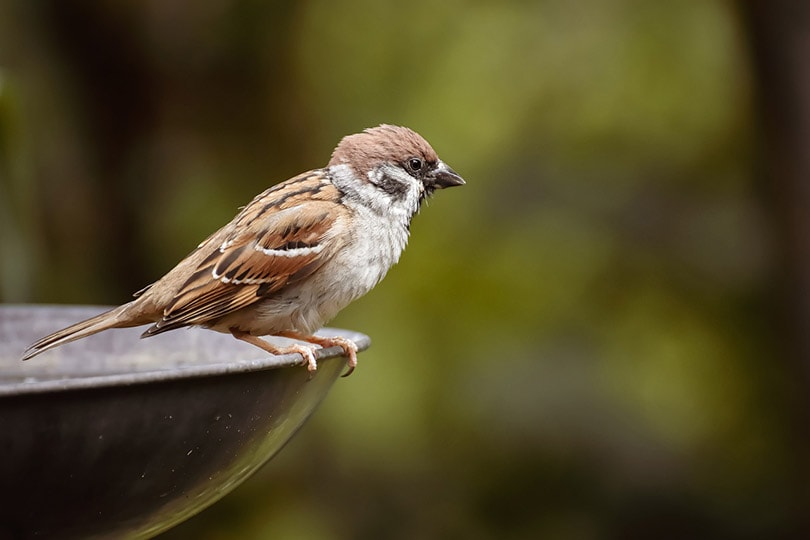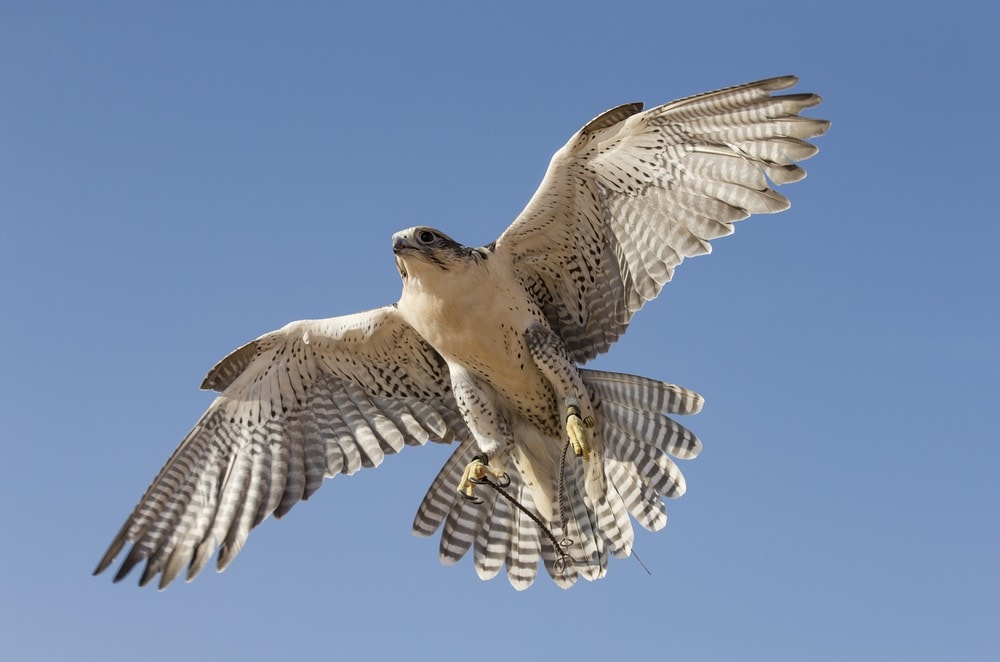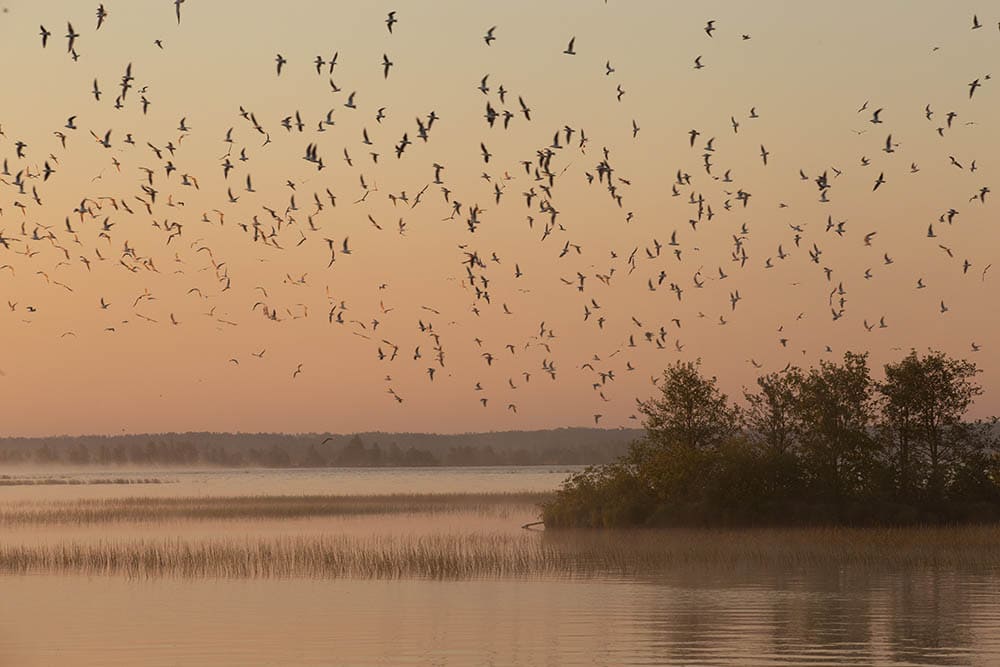How Long Can a Bird Survive Without Water?
Last Updated on

Water is crucial to a bird’s health like it is for all living organisms, but the amount needed to sustain life can vary depending on the species. Unlike mammals, birds lack sweat glands and require less water to survive, but they lose it through their droppings and respiration. Most small to medium-sized birds need to drink at least twice a day to stay hydrated, and most will only survive 1 to 2 days without water. Unhealthy birds, nestlings, and those living in hot climates may not survive an entire day without water.

The Importance of Water
Some species need more water than others, and birds that rely primarily on seeds for food need more water than insectivores. Fruits and insects have high moisture contents, but they’re only plentiful in warmer climates during the winter and fall. Birds that do not fly south in the winter depend on backyard feeders and birdbaths for food and water.
Water is essential for hydration, but it’s also vital to the bird’s hygiene. Birds bathe in water to remove the dirt and debris from their fathers; clean feathers are easier for birds to preen. When they preen their feathers, the birds transfer oil from the preen gland and spread it around the feathers to keep them waterproof and better insulated.
If you have a birdbath in your yard, it’s vital to clean it at least once a week and change the water every day. Wild birds can become sick from contaminated water, and they can also transmit viruses like salmonella through birdbath water. Using gloves when you clean the birdbath, keeping your hands away from your mouth and face, and scrubbing your hands thoroughly with soap can reduce your chances of contracting an illness from a birdbath.

Water Requirements for Larger Birds
We’ve discussed how smaller birds need water every day to survive if they consume a dry diet, but what about larger birds? The largest avian creature on the planet, the ostrich, can survive without water as long as it has plants and insects to keep it hydrated. The ostrich’s body is adapted to desert and savannah climates, and it survives on roots, seeds, leaves, lizards, rodents, snakes, and insects. The massive birds also digest stones, pebbles, and sand to assist their gizzard in grinding up food.
Ostriches will drink from a watering hole on a sweltering day, but they mostly stay hydrated by eating plants. To minimize water loss, ostriches have the unique ability to raise their body temperature. Several birds of prey can go days without eating or drinking. Eagles can store food in their crop and digest it at a later time, and like ostriches, they rely on their meals to stay hydrated.
Hawks get most of their water by eating rodents, and species like the red-tailed hawk will typically eat two or three chipmunks every day to stay healthy and hydrated.
Desert Birds
Although larger predatory birds generally need to drink less than songbirds, the songbirds native to the deserts of the southwestern United States can survive blistering heat without drinking water. They minimize water loss by hiding in shady areas during the hottest time of the day, and their efficient kidneys excrete less liquid than other species. Desert birds like the cactus wren rely on fruit and nectar for moisture, but the black-throated sparrow can extract enough moisture from seeds, unlike the songbirds in cooler climates who depend on water sources for hydration.

Migrating Birds
Migratory patterns vary among species, but until recently, researchers were unsure which birds traveled the longest routes without stopping to take breaks. Without taking breaks, how do migrating birds eat and drink? Species like the common swift eat flying insects for food and moisture when traveling for several months in the air.
Arctic terns travel the longest route by flying 60,000 miles from England to Antarctica, and the alpine swift used to hold the record for the longest sustained flight at 200 days. However, in 2016, researchers discovered that the common swift could stay airborne for 10 months without taking a break for rest.
Common swifts mate and raise their young in Scandinavia for 2 months, but then they take flight and survive off flying insects in sub-Saharan African jungles for the next 10 months.
Ornithologists previously speculated that the common swift stayed in the air for long periods because of the lack of roosting sites and the aerodynamic shape of the bird’s body. When the birds were fitted with tiny accelerometers before they left for their round-trip journey, researchers confirmed later that the birds rarely touched the ground in 10 months.
Common swifts are not suited for life on land. They’re not very coordinated when they stumble around on the ground, and they’re vulnerable to predators when they’re not flying. The sleek birds receive food and water from the flying insects, but it’s unclear when they sleep. Some speculate that the birds sleep at dusk and dawn when they ascend to over 10,000 feet and slowly glide down.

How To Provide Safe Drinking Water for Wild Birds
Wild birds become more desperate for water when the temperature drops below freezing or gets hot enough to dry up water sources. Most species will eventually get water from natural sources, insects, and plants, but they can always use help from humans. Algae can develop quickly on a birdbath during the warmer months, and you’ll need to clean the surface more often in the summer.
Household cleaners will remove algae or mold, but they contain harsh chemicals that can strip essential oils from the birds’ feathers. The ideal formula for scrubbing your birdbath is a 9:1 ratio of water and vinegar. After cleaning the bath, rinse it thoroughly to remove any traces of vinegar.
If you cannot change the water every day, you can add a fountain to prevent mosquitos from laying eggs. Some baths become filled with leaves and debris when placed under trees, but you can minimize the accumulation by moving it to an open area.

Conclusion
Wild birds sometimes appear to have relaxed lives, but they struggle to find water and food when the temperature limits their sources. Most smaller species will perish in 48 hours if they cannot drink water, but some birds have adapted to harsh environments so they can drink less and rely on food for moisture. Water is essential to our winged friends, but several avian species, like ostriches, have found ways to stay hydrated without drinking water.
Featured Image Credit: Alexas_Fotos, Pixabay
About the Author Robert Sparks
Robert’s obsession with all things optical started early in life, when his optician father would bring home prototypes for Robert to play with. Nowadays, Robert is dedicated to helping others find the right optics for their needs. His hobbies include astronomy, astrophysics, and model building. Originally from Newark, NJ, he resides in Santa Fe, New Mexico, where the nighttime skies are filled with glittering stars.
Related Articles:
Can You Use Binoculars to Look At Stars? How to Choose the Right Pair
How to Choose Binoculars for Bird Watching: 10 Expert Tips
10 Types of Hummingbirds in Arkansas (With Pictures)
8 Types of Hummingbirds in Nebraska (With Pictures)
5 Types of Hummingbirds in Idaho (With Pictures)
3 Types of Hummingbirds in Mississippi (With Pictures)
8 Types of Hummingbirds in Kansas (With Pictures)
5 Types of Hummingbirds in West Virginia (With Pictures)
